The weather may be chilly but at least one shrub is coming into season soon if not already. I look for the ripe fruit of the Silverthorn around Valentines Day. This past Sunday in Orlando we saw unripe fruit on some trimmed Silverthorns. However, I have received an email from a reader who was collecting ripe fruit already. It might be related to the warmer than usual weather. A Red Mulberry tree we saw this weekend was heavy with ripening fruit, which for that species is out of season by several months. Silverthorns were imported as an ornamental but with birds’ help liberated itself from planned landscapes. The fruit, for its size, is one of the most nutritious a forager can find, high in vitamin C and the anti-oxidant lycopene. To read more about the Silverthorn, go here.
Winter is here and so is tart sorrel. Easy to identify and tasty, it’s always a favorite find in foraging classes. Sorrel in a larger group called Rumex. According to Merritt Fenald, who was the main botanical PhD. at Harvard from around 1900 to 1950, all species in the genus Rumex are edible. However most of them are bitter, a few mildly so, and some are tart. Among those are the Heartwinged Sorrel and Sheep’s Sorrel. They look quite similar — the leaves look like fat knives with a hilt — but they’re geographically sort in different areas. Our local sorrel is the Heartwinged. They are a pleasant trailside nibble or addition to salads. The more culinary adventurous make them into soup or create a puree of them for stuffing baked tarts. An interesting aspect about the family is that the large plants are often called “Rumex” and the smaller ones “Sorrels.” To read more about the sorrel, click here.
As some of you know I am a gardener. I have “wild” and cultivated plants in my garden. To the left is one of my past gardens. As this is the time of year to grow members of the Brassica family I ordered a few seeds. Somewhere between the ordering and the shipping I ended up with a pound of Osaka Purple Mustard Seeds. I have thousands of red mustard seeds when I wanted about 30. The package says “untreated” but I do not know if that means I could make them into mustard or not because “untreated” to a foreign seed seller might mean something different than “untreated” to a grower. So they will not go to waste, if anyone wants some to grow send me a self-addressed stamped envelope and I will send you some seeds. Mail the SASE to Green Deane, POB 941793, Maitland FL. 32794.
This past week I taught two private classes at an event in Ocala (Thank you, Greg.) It’s a park that accommodates horses and there are numerous hitching posts in the camping/parking area. Horses, of course, means hay and weeds seeds and manure which adds up to a lot of well-fertilized edibles. By far the most prevalent winter green was stinging nettles, Urtica Chamaedryoides aka “Burning Dwarf” aka Heartleaf Nettle. When you put dozens of hammock campers and dozens of patches of stinging nettles together you get pain. You also get great revenge by eating them.
Also blanketing the park was chickweed and henbit, two other esteemed greens of spring. I say spring because that is when they usually show up in northern climates. Here our summers are too warm for them so they make their appearance in the winter. One can find hundreds of recipes for chickweed. Henbit is not as well-known but was a favorite among natives and early settlers. This is because it is one of the first greens of spring that is mild in flavor rather than peppery. Also in the classes we saw some Poorman’s Peppergrass but more of its relative, Shepherd’s Purse. I find Peppergrass all the time mid- and south state. Shepherd’s Purse seems to be an Ocala and north plant. I rarely find it in the central part of the state and never in the southern part. Though I would not be surprised if it shows up in barnyard in south Florida where the horses are fed with Ocala hay.
The foraging class this Sunday should be interesting. I get to the preserve only twice a year or so and they recently had a burn there. It will also be a windy day so dress warmly. The only drawback to LeStrange Preserve is there are no water fountains or official bathrooms. But it is an easy location to get to, only three miles from the Florida Turnpike, Ft. Pierce exit.
Sunday, Jan. 24th, George LeStrange Preserve, 4911 Ralls Road, Fort Pierce, FL, 9 a.m.
Sunday, Jan. 31st, Jervey Gantt Recreation Complex, 2390 SE 36th Ave., Ocala, FL, 9 a.m.
Sunday, Feb. 7th, Red Bug Slough Preserve, 5200 Beneva Road, Sarasota, FL, 9 a.m.
Sunday, Feb. 14, Mead Garden,1500 S. Denning Dr., Winter Park, FL, 9 a.m.
Sunday, March 6th, Florida State College, south campus, 11901 Beach Blvd., Jacksonville, 9 a.m.
Sunday, March 13th, Mead Garden, 1500 S. Denning Dr., Winter Park, FL, 9 a.m.
Saturday, March 19, Colby-Alderman Park: 1099 Massachusetts Street, Cassadaga, 9 a.m.
Saturday, March 26th, Dreher Park, 1200 Southern Blvd., West Palm Beach, 9 a.m.
Sunday, April 3rd, John Chestnut County Park: 2200 East Lake Road, Palm Harbor, FL, 9 a.m.
Sunday, April 10th, Wekiva State Park, 1800 Wekiwa Circle, Apopka, Florida 32712. 9 a.m.
Sunday, April 17th, Bayshore Live Oak Park, 2200 East Lake Road, Port Charlotte, FL. 9 a.m.
Sunday, April 24th, Wickham Park: 2500 Parkway Drive, Melbourne, FL 9 a.m.
To learn more about foraging classes go here.
All of Green Deane’s videos are available for free on You Tube. They do have ads on them so every time you watch a Green Deane video I get a quarter of one cent. Four views, one cent. Not exactly a large money-maker but it helps pays for the newsletter. If you want to see the videos without ads and some in lightly better quality you can order the DVD set. It is nine DVDs with 15 videos on each. Many people want their own copy of the videos or they have a slow service and its easier to order then to watch them on-line. They make a good gift for that forager you know. Individual videos can also be ordered. You can order them by clicking on the button on the top right of this page or you can go here.

Do you know what this fruit is? You would if you read the Green Deane Forum. We also might see it in this Sunday’s foraging class. Photo by Green Deane
Want to identify a plant? Perhaps you’re looking for a foraging reference? You might have a UFO, an Unidentified Flowering Object, you want identified. On the Green Deane Forum we — including Green Deane and others from around the world — chat about foraging all year. And it’s not just about warm-weather plants or just North American flora. Many nations share common weeds so there’s a lot to talk about, such as the one to the left. There’s also more than weeds. The reference section has information for foraging around the world. There are also articles on food preservation, and forgotten skills from making bows to fermenting food. Recent topics include: Forest Weed. Small Plant. Amaranth and Glaucoma. Local Weed. Rosette with Prickly-Looking Leaves. Yard Weed? Not Quite Ginger. Blue Berries into January. Sweet Little Betsy. Ornamental Acorn Look Alike. Looks Like Something You Would Find In a Grocery Store. Amaranth? Conyza and Chlorophyll. Can Anyone Tell Me The Name of This Plant? NJ Biennial. Crepis Japonica Nutritional Information? So Much Free Food! Berries! What Kind Of Shrub Is This? Oxalis Corymbosa. Water Hyssop Recipes. Where To Get L.S.U Groundnut Strain? You can join the forum by clicking on the button on the upper right hand side of this page.
This is newsletter 192.
To donate to the Green Deane Newsletter or website click here.

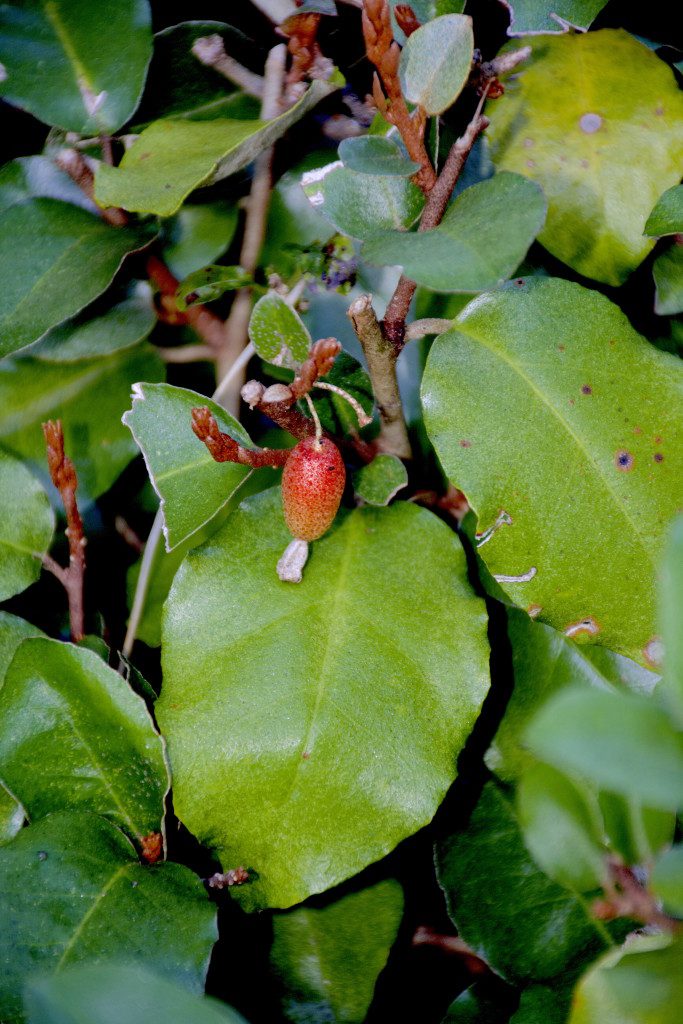
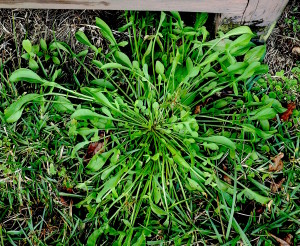
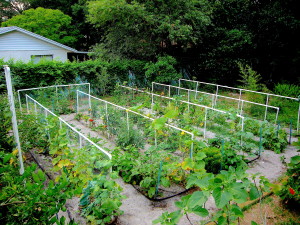
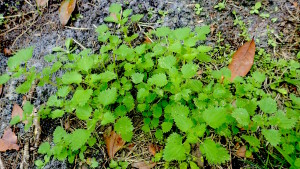
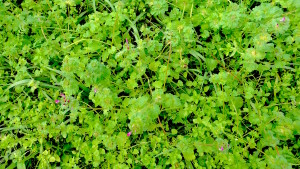
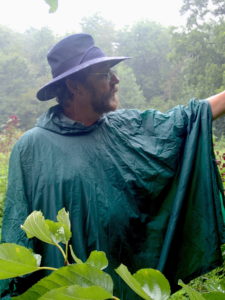


Hey Green Deane!
I read somewhere long ago that when you get stung by Nettles, break open the stem and apply the milky white sap to the sting. I did that and it worked! FYI :O)
Love the newsletter!
Thanks… as for the nettle sting… nothing thus far works for me (and I’ve been looking for decades.)
Dock grows near nettles and is a good remedy for stings
It has never worked for me. Ever. All the sayings, all the wives tales, all the suggestions over nearly 60 years. I just have to tough it out, and be careful around it.
Nice camera, in addition to chickweed and henbit, I found what looks like a a sprig of tansy mustard. It’s in there … who can find it?
There could be some Tansy Mustard. I saw some in the area and it was the right kind of environment for it and the right time of year. But it wasn’t seeding yet.
Now if you’d said take the slime off a catfish and rub it on the wound if poked by a catfish’s barb – yep that does take the pain away.
According to Khartoum forecast humidity is 20% and temp. between 30 to15 deg. C. In my garden I grow some plants from the wild. Apart from the inherent use, I believe by so doing , I may avoid the hazards of contaminants during exposure of the parent plants in the field outside my garden. I collect the seeds of these plants from where I forage and others – sometimes including cultivars – I obtain from the spices section of some big supermarkets. I may also buy already grown herbs e.g. peppermint the leaves of which I often use in my tea. Although last year I grew Mustard and finished with it, at present and for two weeks now, I’m taking care of an individual from a previous seed. After nearly two years now the English thyme is still growing well in depth of soil not exceeding 20 cm. I’m also keeping much of dry seedful blossoms of spotted knapweed of last season. I’m lucky to have in my garden a new foreigner nowadays generously providing me and the birds with ripe dark purple to black berries. I’ve tasted it – sweet – yet looking for complete identification.
Dear Green, recovering from Nettle sting reminds me of the Arabic saying: “like him trading dates to Hagr – or better say Basra of Iraque” , similarly “ he who carries coal to Newcastle” or ”he who sells ice cubes to an Eskimo. After all should I ask you to try again a piece from the leaf of the cactus Aloe vera !?